Imitation of Life Blu-ray Movie
HomeImitation of Life Blu-ray Movie 
Universal Studios | 1959 | 125 min | Not rated | No Release Date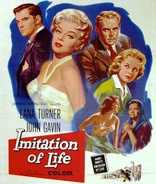
Price
Movie rating
7.5 | / 10 |
Blu-ray rating
| Users | 0.0 | |
| Reviewer | 4.0 | |
| Overall | 4.0 |
Overview
Imitation of Life (1959)
A struggling young actress with a six-year-old daughter sets up housekeeping with a homeless black widow and her light-skinned eight-year-old daughter who rejects her mother by trying to pass for white.
Starring: Lana Turner, John Gavin, Sandra Dee, Dan O'Herlihy, Susan KohnerDirector: Douglas Sirk
| Romance | 100% |
| Drama | 20% |
| Melodrama | 19% |
Specifications
Video
Video codec: MPEG-4 AVC
Video resolution: 1080p
Aspect ratio: 2.00:1
Original aspect ratio: 1.85:1
Audio
English: DTS-HD Master Audio 2.0 Mono (48kHz, 24-bit)
Subtitles
English SDH, French, Spanish
Discs
50GB Blu-ray Disc
Single disc (1 BD)
Playback
Region A (B, C untested)
Review
Rating summary
| Movie | 4.5 | |
| Video | 4.0 | |
| Audio | 3.0 | |
| Extras | 3.0 | |
| Overall | 4.0 |
Imitation of Life Blu-ray Movie Review
"How Do You Tell a Child That She Was Born to Be Hurt?"
Reviewed by Michael Reuben April 12, 2015When Universal set out to remake Imitation of Life a quarter century after its original adaptation, much had changed. The Depression was over; African-Americans had fought with distinction in World War II (though not without resistance, as recounted in such films as The Tuskegee Airmen); the Supreme Court had decided Brown v. Board of Education; and Rosa Parks had refused to give up her seat to a white person on a Montgomery, Alabama bus, leading to the boycott that became a milestone in the civil rights movement. The essential plot of Fanny Hurst's novel was more relevant than ever, but the setting and characters had to be reinvented for a contemporary audience. Screenwriters Eleanore Griffin (Boys Town) and Allan Scott (Top Hat) updated the story to the Forties and Fifties and reconceived the lead character as an aspiring actress, a role that perfectly suited star Lana Turner, whose screen presence was the polar opposite of Claudette Colbert's breezy comedienne. One of film noir's memorable femme fatales in the original The Postman Always Rings Twice, Turner had become more famous for her private life than her screen roles. Married eight times, she was embroiled in scandal the year before the remake of Imitation of Life, when her teenage daughter stabbed and killed her gangster boyfriend, Johnny Stompanato. The daughter was acquitted, but in the immediate aftermath Turner's very image on the screen connoted high drama. That image provided ideal material for director Douglas Sirk, whose lushly expressionistic style was often dismissed as soap opera during his active years in Hollywood but who has since been recognized as a cinematic master, revered by talents as diverse as Quentin Tarantino and Todd Haynes. Imitation of Life was Sirk's last American film before he returned to his native Germany, from which he and his Jewish wife had fled the Nazis. No director could have been better attuned to the story's tragic theme of how genetic inheritance directs one's path in life. Working with his usual creative team, Sirk constructed what appears, on the surface, to be a traditional "woman's picture" about passion and romance. On closer inspection, though, his Imitation of Life reveals itself as a kind of waking nightmare in which every main character is permanently trapped, and from which death is the only escape.
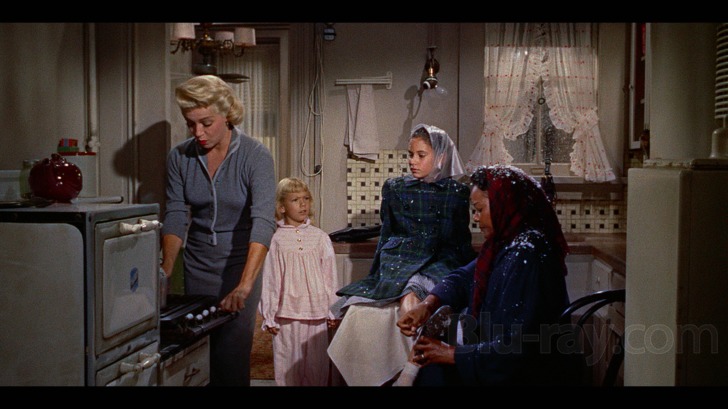
To help distinguish the remake from the 1935 Imitation of Life, the names of the two mothers and daughters have been changed. The white mother is now Lora Meredith (Turner), an aspiring actress who has moved to New York from a small town after the death of her husband, the director of a local theater company. Her daughter is Susie (played as a child by Terry Burnham and as a teenager by Sandra Dee). The black mother is Annie Johnson (Juanita Moore, who was nominated for an Oscar for her performance). Her daughter is named Sarah Jane (Sarah Dicker as a child, and Susan Kohner as a young adult, also Oscar-nominated). The fateful meeting that unites Lora's and Annie's lives occurs during a weekend outing to the Jersey Shore. In one of many ironic turns, it is the children who meet first, playing together without any sense of difference. (It is the closest they will ever be.) In yet another departure from Hurst's novel, the character of Steve Archer (John Gavin, best known for Psycho) meets both families at the same time as they meet each other. Here, Archer is an aspiring photographer, rather than a research scientist, and eventually he will become an ad man. As in the 1935 film, he will later find himself in a love triangle with Lora and her grown-up daughter, but today he is just looking for interesting subjects to snap at the beach. Amiable and charming, Steve Archer will remain an important character, but Sirk's visual design marks him from the beginning as the outsider he is destined to remain—a literal "fifth wheel" to the four women at the heart of the story. After Lora takes in Annie and Sarah Jane, she continues her struggle to break into show business, accepting modeling jobs, banging on doors for auditions and being humiliated by a predatory agent, Allen Loomis (Robert Alda). Her break comes when she impresses a successful playwright, David Edwards (Daniel O'Herlihy), for whom she becomes muse, leading lady and girlfriend, starring in one profitable hit after another, until, when Lora no longer needs Edwards, she sends him on his way. By this point, Lora has moved to a large and luxurious house in the suburbs, complete with stables, where Annie presides over a staff of servants; Susie is attending boarding school; and Sarah Jane has grown into a beautiful but unhappy young woman who so desperately wants to be white that she sneaks out of the house, changes her name and has a white boyfriend named Frankie (Troy Donahue). When Frankie's friends tell him the truth about his girlfriend, his reaction is furious and violent. The first half of Sirk's Imitation of Life focuses on Lora's struggle to succeed, which here requires no participation by her African-American housekeeper and contributes nothing to Annie's fortune, unlike in Hurst's original novel and the 1935 adaptation. The second half explores Sarah Jane's growing alienation from her mother and her own identity. Sirk's film is more explicit in demonstrating why a light-skinned young woman would want to "pass" in 1959 America. As a little girl, she sees her mother routinely mistaken for her nanny. As a young adult, she suffers the crushing blow of being asked by her boyfriend whether her mother is a "n——r" (the "n" word does not appear in the 1935 film). It is no accident that, when Sarah Jane attempts to strike out on her own and reinvent herself, she does so in the image of her surrogate white mother, Lora Meredith, by becoming an entertainer, albeit as a cabaret dancer and chorus girl. She would rather be a poor "imitation" of Lora than follow her own mother's example, and she would rather be alone than date the African-American busboys, cooks and chauffeurs her mother finds suitable. Both mothers find themselves estranged from their daughters as Imitation of Life progresses, but in the case of Lora and Susie, the estrangement can be overcome, if only Lora will stop obsessing over her career long enough to pay attention to Susie instead of just throwing money at her. For Annie and Sarah Jane, the problem is the exact opposite: Sarah Jane has always had her mother's full attention, and the last thing she wants is to have this modestly self-effacing Negro woman constantly reminding her of who she really is. The gap between mother and daughter can only be bridged in death, when Sarah Jane can admit her love for her mother (and beg her forgiveness) without dreading the consequences of acknowledging the relationship. Sarah Jane's tragedy is to have her best and deepest feelings twisted by racism and self-loathing. As she huddles sobbing in a limousine at the film's end, it is unclear whether she can ever recover. The photography of Imitation of Life is filled with distorted angles, odd reflections, characters hemmed in by objects, constrained in tight spaces or seen through obstructions. Both visually and thematically, it is about people who are being cut off from choices by forces beyond their control—some much more than others—until they aren't living a life but just an imitation.
Imitation of Life Blu-ray Movie, Video Quality 
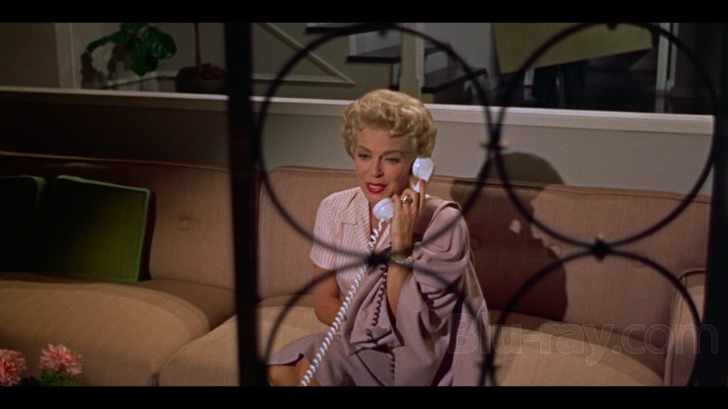
Imitation of Life was shot by Douglas Sirk's usual Hollywood cinematographer, Russell Metty, who would later win an Oscar shooting Spartacus for Stanley Kubrick. Even more than with the 1935 version of the film with which it shares a single Blu-ray disc, I wish that Universal had provided information regarding the source and mastering, because this 1080p, AVC-encoded presentation raises some interesting questions. First, it has been widely reported that Universal recently undertook a 4k restoration of Sirk's Imitation of Life, the results of which have played at a few specialty venues. One hopes that the same restoration provided the source for the Blu-ray, but nothing is certain, especially since Blu-ray discs often enter production many months in advance of street date. Second, the film's aspect ratio on this Blu-ray is 2.00:1, whereas previous DVD releases have been framed at 1.85:1, which, by 1959, was an established standard. No explanation has been offered for the change. According to people who have an earlier DVD release (which I do not), the new framing does not crop significant picture information but in fact adds information on the top and sides. While these questions cannot be answered at this time (and I will update the review if I learn more), one can certainly appreciate the richness and intensity of the Blu-ray's colors, which are crucial to Sirk's visual design. His use of reds, yellows and blues, both compositionally and thematically, are essential to the tone of each scene and the overall impact of the film, and the Blu-ray delivers these colors in their varied hues with authority and conviction. Detail is generally quite good, although it suffers in some shots that obviously involve either opticals or rear projection (e.g., in the opening sequence at the beach). In crucial scenes where characters are deliberately obscured (by mirrored reflections, shutters, grilles or some other distortion deliberately blocking the camera's view), the level of fine detail is sufficient to make out both the character and the object blocking them, which is essential to the artistic effect. Black levels and contrast appear to be properly set, and the film's grain pattern appears natural. The average bitrate is exactly the same for the 1959 version as for the 1934, at 22.998 Mbps. Here, too, while I would have preferred more bandwidth, the result appears to be without blemish.
Imitation of Life Blu-ray Movie, Audio Quality 
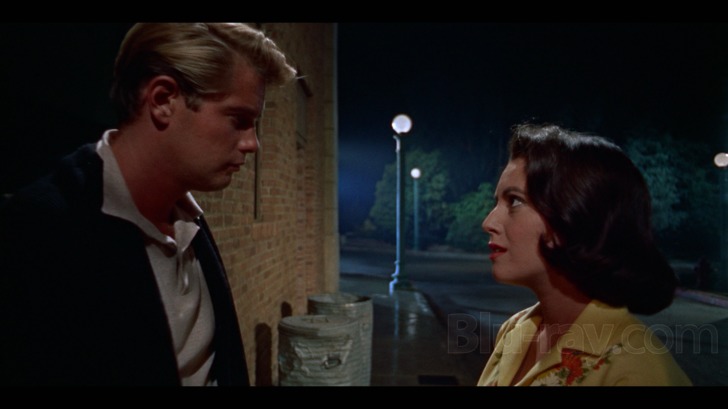
The original mono soundtrack has been encoded as lossless DTS-HD MA 2.0, with identical left and right channels. The dialogue and sound effects are clear, but Sirk's version relies much more heavily on music to carry the film's emotional freight than did the 1934 adaptation. The score by Sirk's usual composer, Frank Skinner (Harvey), is lushly emotive or, depending on one's orientation, flat-out manipulative. The high end sometimes pushes the limits of the recording technology, and I do not recommend turning up the volume too loudly, but the fault is in the original soundtrack. The recording of gospel singer Mahalia Jackson performing "Trouble of the World" is excellent, as is the performance of the film's title song by Earl Grant over the opening titles (music by Sammy Fain, lyrics by Paul Francis Webster).
Imitation of Life Blu-ray Movie, Special Features and Extras 

The extras first appeared on Universal's 2008 two-disc DVD set of Imitation of Life, which featured both the 1934 and 1959 versions.
- Commentary with Film Historian Foster Hirsch: Hirsch is an unabashed admirer of the film, which he considers Sirk's masterpiece. He has shown it at various festivals that include appearance by Juanita Moore and Susan Kohner, and his commentary is informed by his own conversations with the actresses about their participation in the project. If you can overlook the gushing, Hirsch's knowledge of the film is deep and extensive, and he notes many technical details about the visual design that register at a subliminal level but are carefully crafted. He also discusses Sirk's approach to working with the cast (which differed for each actor) and notes several lines that were ad libbed.
- Lasting Legacy—An Imitation of Life (480i; 1.78:1, enhanced; 31:40): This 2008 documentary covers both versions of Imitation of Life. The only interviewee involved in making the films is Juanita Moore. The others are scholars and historians, including Foster Hirsch, Avery Clayton (who recorded the commentary for the 1935 version), Drew Casper, Donald Bogle and Jessica Funches.
- Theatrical Trailer (480i; 1.37:1; 2:19).
Imitation of Life Blu-ray Movie, Overall Score and Recommendation 
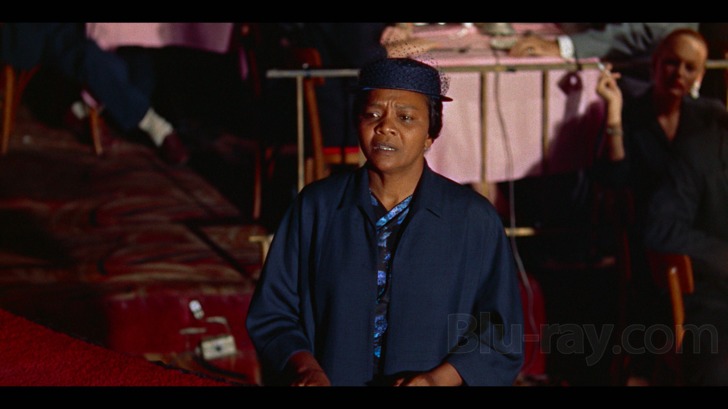
Douglas Sirk was famous for working in the narrative form known as "melodrama", a term that has acquired a bad reputation, although I'm not sure why, given the continued popularity of sci-fi, fantasy and comic book films. Where would any of those genres be without the big emotions, grand gestures and impossible choices forced on characters by circumstances that are the hallmarks of melodrama? Sirk just happened to be interested in a different genre, one dominated by women (hence the term "woman's film") and, at its best, animated by issues of genuine relevance. He and Imitation of Life were an ideal match. Highly recommended.
Similar titles
Similar titles you might also like
(Still not reliable for this title)

Imitation of Life
1934

The Best of Everything
Limited Edition to 3000
1959

Sayonara
Limited Edition to 3000
1957

Far from Heaven
2002

Giant 4K
1956

Wild River
Fox Studio Classics
1960

Guess Who's Coming to Dinner
Limited Edition to 3000 - SOLD OUT
1967

The Idolmaker
1980

Humoresque
1946

Gentleman's Agreement
Fox Studio Classics
1947

Empire: The Complete First Season
2015

Ask the Dust
2006

Blue Denim
Limited Edition to 3000
1959

Peyton Place
Limited Edition to 3000
1957

A Star Is Born
Restored Edition | Warner Archive Collection
1937

Beloved Infidel
Limited Edition to 3000 - SOLD OUT
1959

On Chesil Beach
2017

The Choice
2016

Brooklyn
2015

A Patch of Blue
Warner Archive Collection
1965